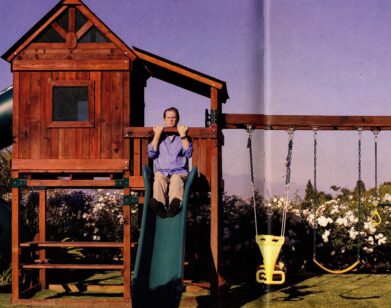Jacob Collier Teaches Us How to Make A Song in a Shipyard

Photo by Alexandra Gavillet.
Jacob Collier can make a song out of just about any sound–a deck of cards, a lawnmower, and garden sheers, for example. The English musical wunderkind began posting intricately layered covers of Stevie Wonder songs (among others), eventually catching the attention of one Quincy Jones, who signed Collier to his management company. Collier’s most recent endeavor is a project titled Djesse, in which he explores a range of genres–jazz to folk to funk and back again–across four volumes (the second volume drops Friday). “Each album is like a separate musical universe,” he told Interview, fresh off a flight to Portugal, one of many stops on his whirlwind international tour. But how does one create a song from the sounds you’d find in, say, your local shipyard? Jacob takes us behind the curtain to reveal some of his musical magic, and explains his step-by-step song-making process.
———
1. Find an Idea
“Ideas come the whole time. I always want to jump on the idea the moment in comes, but you learn how to let the idea take shape. For me, it always starts with a feeling. I’ll get a flash of a feeling that’s something that I want to describe.”
———
2. Court Your Idea
“Having an idea is easy, courting one can be difficult. It’s like storytelling–who are the characters, what’s the basic plot? How are you going to work from your intro all the way through to your outro, and make that narrative interesting? From there, you move into, well, what musical language applies to that idea? What sounds are present? This is the musical idea, now how can I bring it to life?”
———
3. Locate Your Sounds
“I didn’t have beautiful microphones, I didn’t have an amazing drum kit, I didn’t have a recording engineer, but I had one heck of an imagination. I would just run around and collect weird stuff. There’s one song that I recorded called ‘Saviour‘ and every single sound from that song was actually recorded in a shipyard on my iPhone. I walked around, and I recorded the sound of the wind battering the sails. I went and whacked a bunch of barrels to make this industrial groove. I made it really slowly, then I sped the groove up to double speed. It had this crazy hip-hop vibe, but it sounded like a shipyard. That kind of thing gets me so excited, because I’ve never heard a groove that sounds like that. I can obviously go online and I can download free sample packs of drum, but, really, I’d rather use the things that are around me, because those are the things that are going to remind me of my life, and that’s what’s going to inspire me to tell more authentic stories.”
———
4. Collate Your Sounds
“If you record a boat in a shipyard with a bunch of wind, that’s like almost every frequency is present: you’ve got wind, and you’ve got a boat going by, and you’ve got the sails going. That could be snare drum, or high hat, or kick drum, or something completely different. It’s deciding how you place the sounds in a musical sense. Chopping them up, figuring out which sound is which, and then figuring out what that groove really is. Slow or fast, or high or low, or whatever.”
———
5. Distill Your Song
“By the time I get to step five, I often refer to step one. What was the feeling that I was chasing the whole time? Was it something that was as crazy as this, or was it something that was way more simple? The challenge is to keep those ideas relevant to that initial idea. It’s really important to distill your idea into a place that feels balanced, and like it’s not an excess of itself, and there’s a reason for everything. At one point, you need to stop tweaking and let the thing be what it is.”
———
6. Share Your Song
“Find a way to package your idea that feels honest, then share it. Sometimes it’s playing it for a few friends. The whole life of a song doesn’t end with the way that it sounds on the record. How does this song grow? What works live? What do people like to sing along to? I went around a shipyard, and recorded a bunch of sounds, but that doesn’t necessarily have to feel like a shipyard to the other person. Maybe to them it feels like something totally different, and reminds them of a feeling. The only reason I create something is because I’m chasing a feeling. You can use a bunch of musical or psychological operations to achieve that result.”






